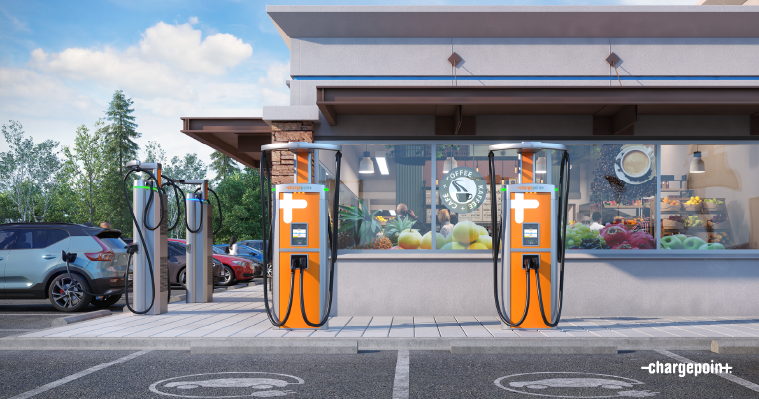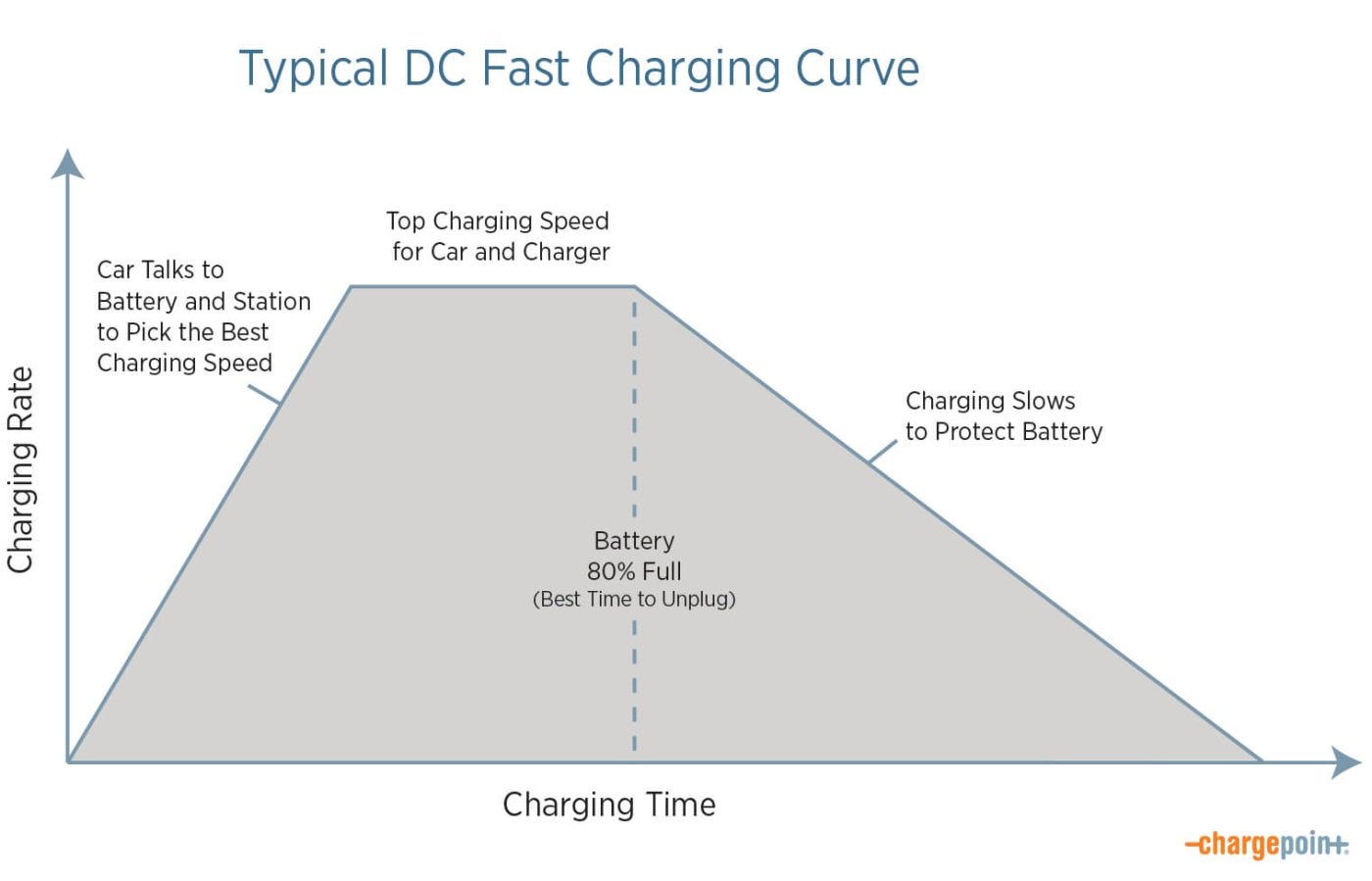
DC rapid charging is great for when you need to recharge quickly, especially for brief stops on road trips or when you're low on your charge and pressed for time. We covered when and how to use DC charging in a previous post to help you get the best DC rapid charging experience possible. If you’ve ever used a DC rapid charging station, you may have wondered what’s controlling the charging speed and why it varies. For the sake of keeping EV drivers and station owners informed and happy, here’s a little more information about what’s happening behind the scenes — or more accurately, inside the charger (and vehicle).
How do DC rapid chargers protect my battery?
DC chargers have the same built-in precautions as any other EV charger: They only deliver as much power as your car can handle. From start to finish, your car is communicating with the charging station, monitoring conditions such as the vehicle’s state of charge, the maximum electrical current available from the station and the battery voltage, and regulating the power flow accordingly. Because DC rapid charging delivers so much more power than AC charging, it’s especially important that it not send more power than your car or battery can handle.
Once charging gets started, your battery warms up and your car may ask for more power, enabling faster charging. As charging continues, your car will alert the charger when the safest top speed is reached and will continue to maintain that pace for as long as possible. Your car is actively in control throughout a rapid charging session — and it may request a moderate speed to ensure safety and maximise battery life. In the long run, this is good for you, too.
Why isn’t my car always charging at top speed?
Because the car is in control, and every car rapid charges a little differently. Each car has a different rapid charging speed threshold which means not every car can charge as fast as every charger. Many charging companies offer rapid chargers that can reach over 350 kW, but reaching that speed depends on several factors. A station's charging speed rating is based on ideal conditions and a high voltage vehicle. It's best to check your vehicle specifications and the amperage of the cables of the specific charger you're using to get the exact rate of charge for your EV. Although the 350 kW rapid charging stations that have been announced are exciting and will be useful in the future, most passenger cars on the road can’t charge that fast yet.
Keep in mind that battery temperature and ambient temperature affect charging speed, too. Batteries may charge more slowly until they warm up or cool down (if the car's been on the road awhile), and extreme outdoor temps can also slow charging. Here’s how a typical DC rapid charging session might look as charging ramps up, reaches top speed and slows down as the battery fills:

When you buy an EV, make sure to ask questions and do research about rapid charging for a particular model, from what connector to use to how long it will take to charge. Knowing what to expect will help you have a great ownership experience and avoid any rapid charging surprises.
Now that you know how rapid charging works and where the curves come in, you’re ready to get the most out of your EV. Just remember that not all rapid charging is created equal because of the variations in EV battery voltages, charging cable amperage and other factors. If you do need to charge up quickly, use the ChargePoint map to find a reliable, easy-to-use DC rapid charger.
